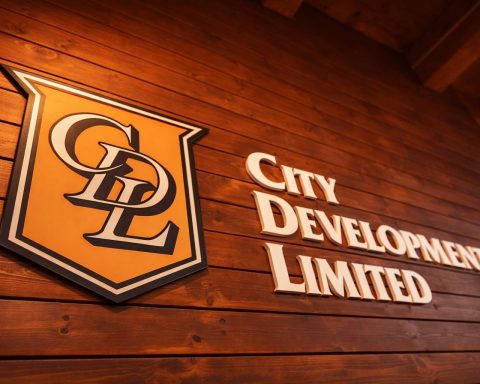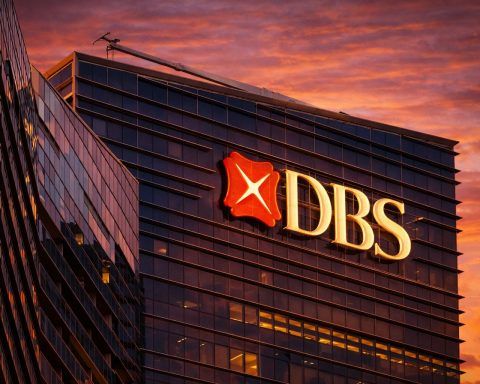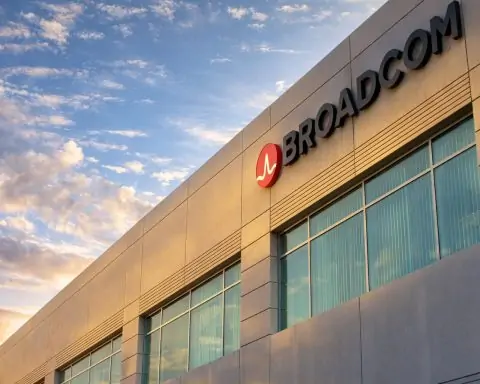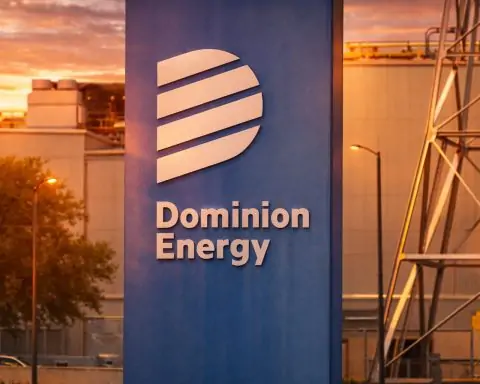- AI goes mainstream: OpenAI rolled out ChatGPT Pulse, a new feature that proactively researches topics and delivers personalized daily updates on mobile [1]. Meta launched “Vibes,” an AI-driven video feed on its Meta AI app, letting users create and remix short AI-generated clips [2]. Startup Perplexity unveiled a Search API giving developers real-time access to its massive web-index (hundreds of billions of pages) [3]. Even sports got AI boosts: Google Cloud is partnering with golf star Bryson DeChambeau on an AI coaching tool. DeChambeau says the app gives “interpretations and iterations” of his swing “minutes before my tee time” [4]. Analysts note this reflects a broader trend: massive investments in AI infrastructure (Nvidia’s CEO now estimates $3–4 trillion will be spent on AI datacenters by 2030 [5]), but some investors are also advising caution, shifting money into sectors like power grids and healthcare tied to government stimulus [6].
- New devices and networks: Verizon announced it will be the first carrier to sell Meta’s new AI-powered Ray-Ban smart glasses [7], highlighting the convergence of 5G networks and AR wearables. Snapchat introduced tiered “Memories” storage plans (100 GB, 250 GB, 5 TB) for users to archive more Snaps [8]. In space tech, SpaceX successfully launched 28 more Starlink internet satellites from California on Sept 28, expanding the constellation past 8,500 satellites [9] [10].
- Cybersecurity alerts: Cyber incidents kept mounting. British retailer Co-op warned a recent hack will cost it about $161 million in lost profits [11], and Jaguar Land Rover only just restored some systems after a ransomware attack [12]. In telecoms, Australian operator Optus suffered a second emergency-calls outage south of Sydney, compounding a week-long network crisis that had already been linked to four possible deaths earlier this month [13].
- Chips & industry policy: Semiconductor strategy is in flux. Qualcomm unveiled its new Snapdragon X2 Elite PC processor, featuring a built-in “Guardian” security mode for corporate fleets [14] – a feature allowing IT departments to connect to machines (even when powered off) for updates or support. As Qualcomm’s CEO noted, this pairs mobile 5G modems with remote management “allowing owners to keep tabs on [devices] anywhere in the world” [15]. Market analysts agree this could spur enterprise interest (Creative Strategies’ Ben Bajarin said “Nobody else can offer something like that” [16]). Meanwhile, all EU governments joined a Dutch-led “Semicon Coalition” calling for a Chips Act 2.0. They argue Europe should scrap vague targets (like a 20% global market-share goal) in favor of securing critical technologies, speeding approvals, and bolstering skills and financing across the chip supply chain [17].
- Regulation & policy: Tech regulation made headlines. The US is grappling with AI health apps: several states have already banned or limited AI “therapy” chatbots, and others (like NJ, CA, PA) are drafting rules [18]. Experts say this patchwork is risky given millions already use such tools – as Earkick chatbot CEO Karin Stephan warned, “millions of people are using these tools and they’re not going back” [19]. Federal regulators are responding: the FTC launched investigations into seven major chatbot firms (including Google, OpenAI’s ChatGPT, Meta, Snap) to probe child-safety and other harms [20], and the FDA has scheduled a Nov. 6 advisory on AI-enabled mental health devices. Internationally, Elon Musk’s X (formerly Twitter) announced it will appeal an Indian court order upholding new local rules for content takedowns [21], arguing India’s mandatory filtering system has “no basis in law” and threatens free expression.
- Startups & VC: Big bets continue in tech. Venture capital news included ex-Sequoia partner Matt Miller raising a $400 million Evantic Capital fund to back early-stage startups [22], with an unusual structure that shares returns with industry “legends” serving as mentors. Meanwhile, the AI boom is still splashing cash: for example, Nvidia’s recent large investment in OpenAI (reported as a multibillion-dollar deal) and Oracle’s $30 billion OpenAI cloud contract highlight the multi-trillion-dollar race for AI infrastructure [23]. (Nvidia CEO Huang estimated companies will spend $3–4 trillion on AI hardware and data centers by 2030 [24].)
- Green tech & energy: Innovations in energy and sustainability popped up. Envision Energy announced that its new large wind turbines have earned an “Environmental Product Declaration” (Green Passport) certifying their lifecycle emissions, showcasing design for recyclability and carbon accounting across the supply chain [25]. In automotive, Volvo said its upcoming EX60 EV (launch 2026) will offer cutting-edge battery packs – including lithium-iron-phosphate (LFP) chemistry and large prismatic cells – aiming for higher efficiency outside of China [26]. A notable trend: second-life EV batteries are now a hot commodity. In Australia, salvagers are buying lithium packs from wrecked EVs for backup power, repurposing them for solar storage and off-grid events [27]. One festival was even powered for a day by trailers of used EV batteries, illustrating how older car batteries (down to ~70% capacity) can still “power an entire music festival” in lieu of noisy diesel generators [28]. As Pickles auction’s Brendon Green put it, “They are certainly in strong demand” [29] as a green energy resource.
Each of these stories reflects how fast-moving the tech world remains. We’ve linked to reporters’ accounts and company releases for all items above [30] [31] [32] [33] [34] [35], with quotes from experts illustrating the stakes (“*we’re not diagnosing but… federal regulation is needed,” APA’s Vaile Wright on AI therapy [36], and benchmarks like Qualcomm’s “Guardian” feature [37]). Industry analysts predict that AI integration, continued space innovation, and green energy solutions will accelerate next year, so stay tuned as these trends evolve.
Sources: Official reports and news from Reuters, Apple/Google/Microsoft press, TechCrunch, Space.com, Snap Inc., AP/ABC News, and others [38] [39] [40] [41] [42] [43]. Each item above is hyperlinked to the original coverage.
References
1. openai.com, 2. www.reuters.com, 3. www.perplexity.ai, 4. blog.google, 5. techcrunch.com, 6. www.reuters.com, 7. www.insidermonkey.com, 8. newsroom.snap.com, 9. www.space.com, 10. www.space.com, 11. www.reuters.com, 12. www.reuters.com, 13. www.reuters.com, 14. www.reuters.com, 15. www.reuters.com, 16. www.reuters.com, 17. www.reuters.com, 18. abcnews.go.com, 19. abcnews.go.com, 20. abcnews.go.com, 21. www.reuters.com, 22. www.bloomberg.com, 23. techcrunch.com, 24. techcrunch.com, 25. www.prnewswire.com, 26. unn.ua, 27. www.theguardian.com, 28. www.theguardian.com, 29. www.theguardian.com, 30. openai.com, 31. www.reuters.com, 32. www.reuters.com, 33. www.reuters.com, 34. abcnews.go.com, 35. www.theguardian.com, 36. abcnews.go.com, 37. www.reuters.com, 38. openai.com, 39. www.reuters.com, 40. www.reuters.com, 41. www.reuters.com, 42. abcnews.go.com, 43. www.theguardian.com










